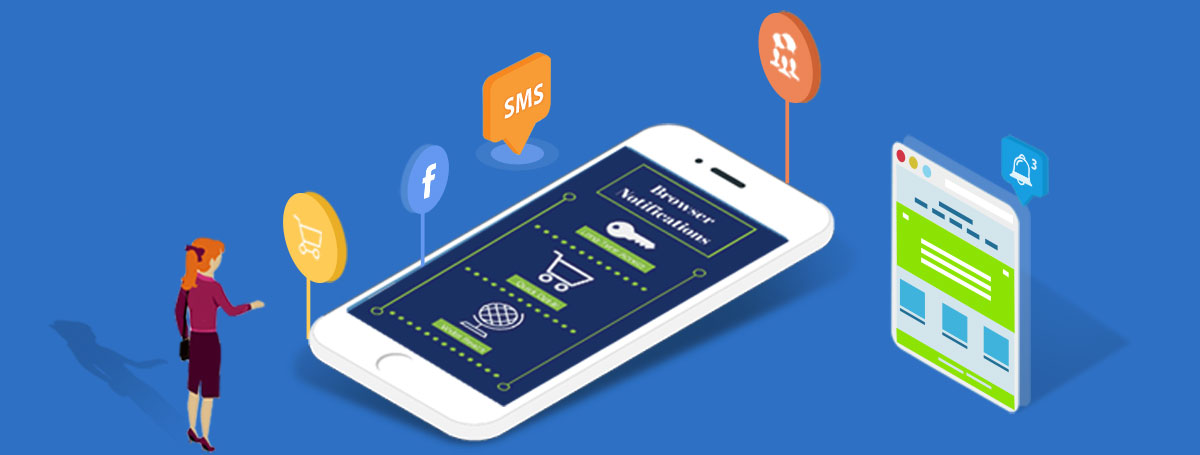
According to Marketo, 98% of website visitors are anonymous. How do you engage and retain those anonymous customers?
If you could get your users to install and keep your mobile apps, that would be a great way to keep them locked in. However, most apps lose 80% of their user base within days! Most people keep a maximum of two e-commerce apps on their phones at a time. This leads to the question: do you really need to invest all the time and money on creating and launching a mobile app?
I would say probably not and Hubspot agrees.
It is recommended that you focus on your mobile site first and ensure that you have a high performing and responsive website that will open up on any browser or device.
Note that the mobile browser is usually always on. Your website does not need to be open on the browser for them to receive notifications, and it can be enabled with a simple opt-in mechanism. Browser notifications are supported by Chrome, Firefox, and Safari.
1.Subscribing: Enable an opt-in message on your site. When your visitors come there and give them a reason to opt-in – to receive notifications about recommended products, news, and so on. All they need to do is to click on yes/allow to subscribe.
2.Un-Subscribing: Unsubscribing is just as easy. All they have to do is remove the website from the list of allowed websites in the browser’s settings page.
Here’s how it is done for different browsers:
1.For Chrome: They can either click unsubscribe when a notification appears on the screen. Or they can go to Settings > Advanced > Privacy Settings > Content Settings > Notifications Section > Manage > Exceptions > block website. They can also browse to chrome://settings/contentExceptions#notifications and block a website.
2.For Firefox: They click on the settings icon and go to Options > ‘Choose’ button under Notifications > Select Site > Click Remove Site.
3.For Safari: They go to Apple Menu > System Preferences > Notifications panel > Drag website from ‘In Notification Center’ section and drop into ‘Not In Notification Center’.
1. News Websites: For updates, breaking news, and polls
2. E-Commerce Stores: For product suggestions, sales alerts, and updates.
3. Banking and Finance: For account details, offers, and security related communications.
Here are some reasons why browser notifications can work very well for eCommerce:
1. True Access: Customers who opt for notifications provide true access to themselves. It helps you identify the users who trust your service and want to stay updated.
2. Address a larger audience: The opt-in for browser notifications is a lot easier, and so you can reach a potentially larger audience that does not take the trouble to register using their emails.
3. Real-time notifications: These appear instantly on the mobile, so you can provide time-sensitive discounts and updates. Time-sensitive discounts work because consumers have a fear of missing out.
4. Personalized notifications, product updates, and product recommendations: These keep your customers connected to your brand, and eventually buying when they need. We have seen click rates between 20% to 40% on these notifications, especially when used carefully. So, make browser notifications part of your multi-channel marketing and sales strategy today.

